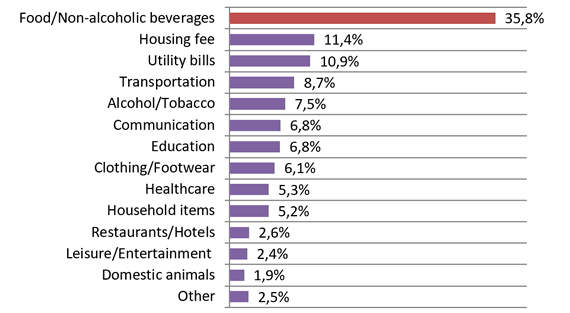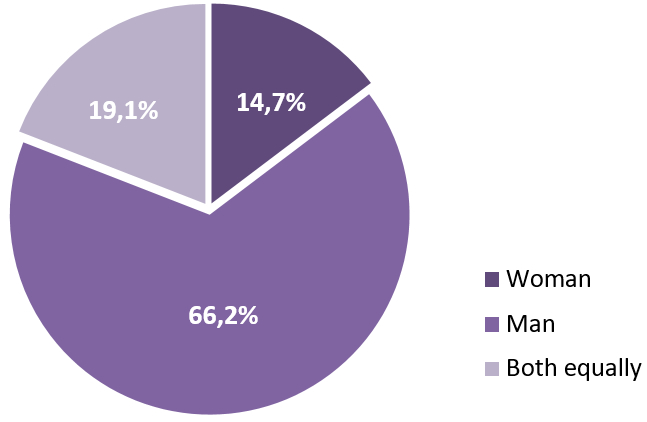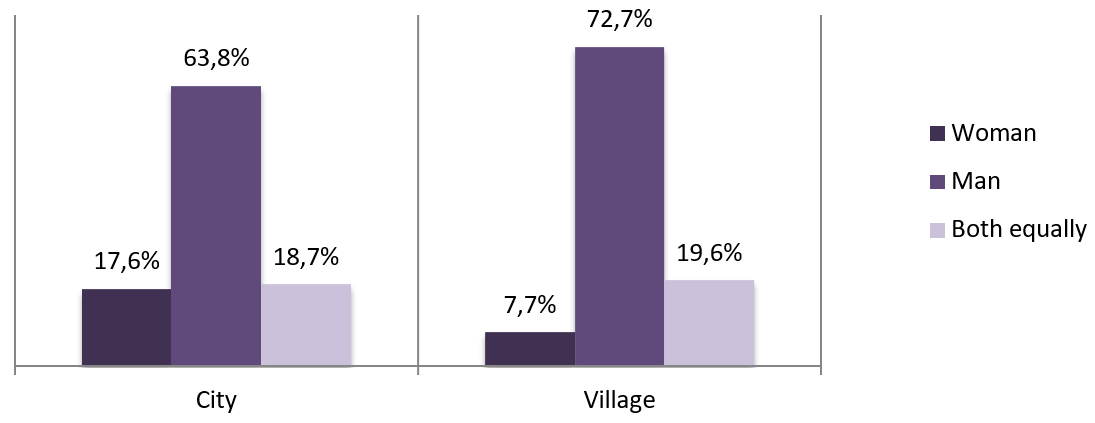More than half of income is spent on physical existence
Surveyed families spend the most on food, more than third of overall income.
In general, the share of housing fees, utility bills and food in the total income
In general, the share of housing fees, utility bills and food in the total income
is 55%. In other words, in Georgia families spend more than half of their
income on physical existence!
"IPM Research" tried to find out how Georgian population spends monthly income and how these costs are distributed with respect to total family income. Survey was carried out throughout Georgia and 1959 respondents participated in it.
As it turned out, more than a third of the total monthly income of households (35.8%) is spent on buying food and drinks. 11,4% of the income goes towards housing fee, 10,9% of it – towards covering utility bills.
8,7% of monthly income of surveyed respondents' families is spent on transportation. Alcohol and tobacco (7,5%), as well as communication (6,8%) and education fees (6,8%) are other most significant expenditures.
It should be noted that only 2,4% of monthly income goes towards leisure/entertainment spending by respondents' families (see Table #1 for more detailed information).
Table #1

________________________________
1Average percentages of housing fees and education fees are calculated only from the total number of respondents whose families have such expenditures. (Number of surveyed: housing fees - 306; education - 706)
Recently spread opinion about woman becoming financial backbone of a family instead of men is incorrect. In almost two-thirds of households man remains main breadwinner (see Table #2 for more detailed information), however, comparing images of city and village still gives us an idea about dynamics of role change between a man and a woman in case of household income.
Table #2

Man is main breadwinner more often in families that live in village. There is an opposite situation when women are concerned. Woman is main source of household income in families living in city twice as often as in families living in village. Whereas the difference isn't noticeable in case of households, where family income is equally distributed both on man's and woman's income. We meet almost identical amount of this type of families in both settlements (see Table #3 for more detailed information).
Table #3



